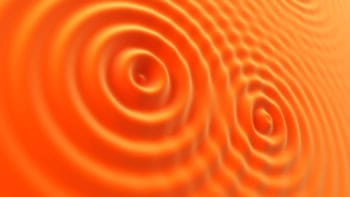
So what is the site about?
The Physics Mill is a blog written by Jonah Miller, who is working on a PhD in numerical relativity at Canada’s Guelph-Waterloo Physics Institute. If the phrase “numerical relativity” rings a bell even though Einstein’s general theory of relativity isn’t your speciality, it’s probably because you heard a lot about it in February, when physicists working at the Laser Interferometer Gravitational Wave Observatory (LIGO) announced that they had observed a gravitational-wave signal. By matching this observed signal to a database of possible waveforms calculated using numerical relativity techniques, the LIGO scientists determined that the signal came from a gravitational wave produced during the merger of two black holes. Numerical relativity also made it possible to work out the masses and rotation rates of both the initial black holes and the final one created in the merger. In short, Miller’s favourite subject is very much in the spotlight right now – an excellent reason to pay a visit to his blog.
What are some sample topics?
The LIGO discovery is, of course, at the top of the pile, with (as of mid-March) a series of three long posts covering the direction, source and “poetry” of the first directly observed gravitational wave. Each of these posts is accessible and interesting, and also contains a few details (such as the likely composition of the stars that collapsed to form the pair of merging black holes) that were not widely remarked upon in the immediate aftermath of LIGO’s discovery. But Miller has been blogging off and on since 2012, when he was still an undergraduate studying physics and mathematics at the University of Colorado-Boulder, US, so the blog’s archive also includes posts on decidedly non-astrophysical topics such as graphene, the four-colour theorem in mathematics and how field-effect transistors work.
Who is it aimed at?
Miller is writing his blog as a public-outreach project, so many of the posts (including the recent LIGO series) are accessible to anyone with an active interest in physics. Judging from reader comments, though, many visitors to The Physics Mill know at least as much about these topics as he does, and now and then one of these experts will pick up on a mistake or two. It’s to Miller’s credit that he always engages with these comments, writing updates that explain errors or oversimplifications; as he puts it, “I…want to understand these topics better, and one of the best ways to learn is to teach.”
Can you give me a sample quote?
From a March 2016 post on the direction of LIGO’s gravitational waves: “We believe that the merger of a neutron star and a black hole (or two neutron stars) will produce a gamma ray burst. Now, it’s hard to imagine that the merger of two black holes, which is what LIGO measured on 14 September 2015, could produce such a thing. But people were looking anyway. And one of the gamma-ray detectors, Fermi’s GBM, thought it saw something. When LIGO announced its detection, the Fermi researchers went back through the data the GBM had collected and looked for excess power from it. They found what looked like an event and, after much analysis, concluded that the probability it was a false alarm was approximately 0.22%. This is certainly exciting, but physicists are a cautious lot. Something exotic might be happening but I also urge caution. We need more gravitational-wave detections to understand what’s going on. We’ve entered the age of gravitational-wave astronomy. It’s only a matter of time.”
- Enjoy the rest of the April 2016 issue of Physics World in our digital magazine or via the Physics World app for any iOS or Android smartphone or tablet. Membership of the Institute of Physics required



